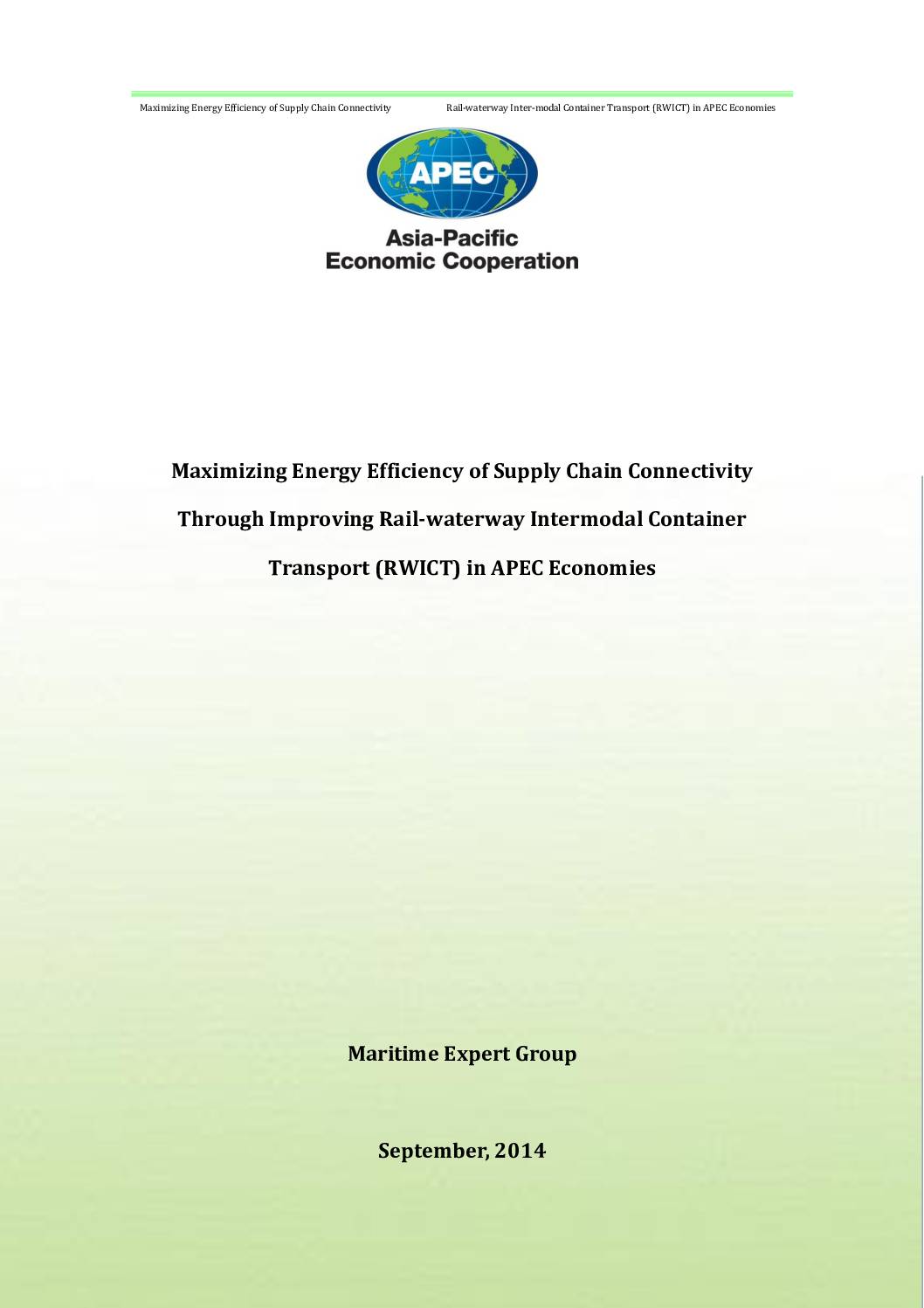APEC’s 21 member economies accounts for approximately 55 per cent of world GDP, and 49 per cent of world trade. It is estimated that one percentage point increase in the ratio of trade to GDP would lead to a two to three per cent increase in income per person and energy efficiency. Supply chain connectivity plays a very important role not only in facilitating trade and investment but also in improving the efficiency of energy use, especially in the APEC region where trade corridors crossing ocean and land and rail system are in fast growth. It is estimated that the volume of trade originating from East Asia (China, Japan, Korea, Singapore and so on) constitutes a very significant portion of the overall trade in the APEC region. It is noted that a considerable amount of these trade cargoes are generally transported by sea only or delivered via a single economy, the cross-border rail-waterway intermodal container transport (RWICT) has not been paid due attention to.
If the rail-waterway transport, especially via the New Eurasia Land Bridge, can be further promoted, considerable benefits can be obtained, for example, transport distance and time reduction, less CO2 emission, and better economic performance. However, there are some practical challenges in realizing this concept. First, information regarding demand, supply, rail facility, rail capacity and so on for RWICT is still unclear and needs to be identified. Second, the potential shipment flow, the operation process of rail-waterway intermodal container transport system and the minimized environmental damage and cost reduction by the new way need to be designed and proposed explicitly. Besides, a bilateral or multilateral trade agreement is to be achieved so as to smooth the trade procedure between China, Russia and other Asia economies that will use the intermodal container transport corridor. Furthermore, relevant policies need to be recommended.
Against this background, the current report explores the development of RWICT in the Asia-Pacific region, with a focus on the intermodal container transport of goods from East Asia economies like Korea and Japan, via China and to Central Asia or even East Europe. In the analysis, China has been taken as the subject several times as the it is and will continue to be a major player in the Maximizing Energy Efficiency of Supply Chain Connectivity Rail-waterway Inter-modal Container Transport (RWICT) in APEC Economies IV promotion of RWICT via the New Eurasia Land Bridge among APEC economies, especially among East Asia economies. The report aims to demonstrate that an improved RWICT system in the trade corridor covering APEC economies, or a better utilization of the New Eurasia Land Bridge, is the best choice for the Asia-Pacific region to maximize energy efficiency and reduce logistic costs for supply chain trade.
To this end, the potential benefit of improving RWICT via the New Eurasia Land Bridge based on information about container demand and supply, and potential transport routes and freights will be quantified; existing problems and impediments in developing the rail-waterway corridor will be analyzed by looking into the demand and supply deficiency, the shipment and trade procedure, the current management mechanism and so on; and recommendations on construction of infrastructure, simplification of shipment procedure and so on will be provided, so as to improve the performance of the corridor.
The analysis comprises of four sections: section one deals with the current status and trend of RWICT development in the Asia-Pacific region; section two compares RWICT with other transport modes, in the form of rail vs sea and rail vs road, mainly from the perspective of energy consumption; section three proposes suggestions in relation to China’s RWICT and some general recommendations; and section four is equivalent to a mini instruction manual, providing key information for the reference of various parties who intend to get involved in RWICT via the New Eurasia Land Bridge.
Share this

Sector: Transport
Country / Region: Asia, China, Europe, Japan, Philippines, Russian Federation, Singapore
Tags: bridges, economic cost, energy, energy efficiency, rail transport, supply chains, tradeKnowledge Object: Publication / Report
Published by: APEC
Publishing year: 2014
Author: China Waterborne Transport Research Institute
